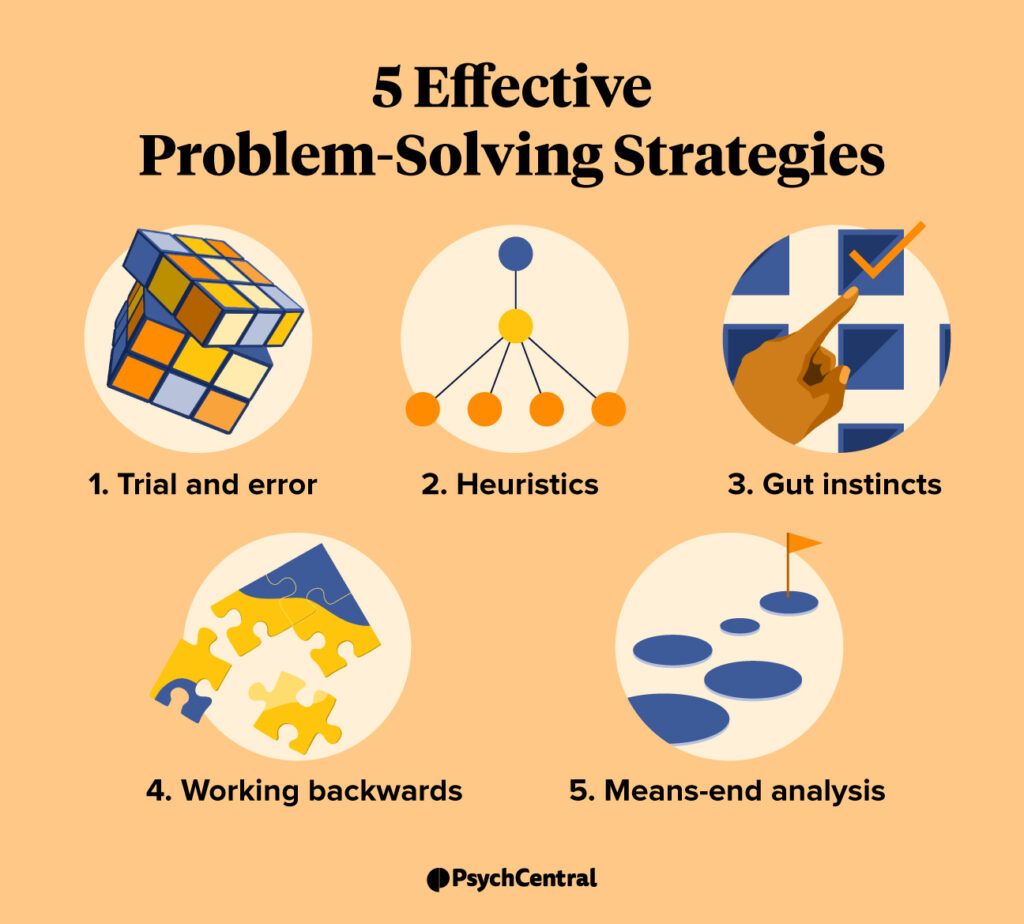
Got a problem you’re trying to solve? Strategies like trial and error, gut instincts, and “working backward” can help. We look at some examples and how to use them.
We all face problems daily. Some are simple, like deciding what to eat for dinner. Others are more complex, like resolving a conflict with a loved one or figuring out how to overcome barriers to your goals.
No matter what problem you’re facing, these five problem-solving strategies can help you develop an effective solution.

To effectively solve a problem, you need a problem-solving strategy.
If you’ve had to make a hard decision before then you know that simply ruminating on the problem isn’t likely to get you anywhere. You need an effective strategy — or a plan of action — to find a solution.
In general, effective problem-solving strategies include the following steps:
Problem-solving strategies don’t guarantee a solution, but they do help guide you through the process of finding a resolution.
Using problem-solving strategies also has other benefits. For example, having a strategy you can turn to can help you overcome anxiety and distress when you’re first faced with a problem or difficult decision.
The key is to find a problem-solving strategy that works for your specific situation, as well as your personality. One strategy may work well for one type of problem but not another. In addition, some people may prefer certain strategies over others; for example, creative people may prefer to depend on their insights than use algorithms.
It’s important to be equipped with several problem-solving strategies so you use the one that’s most effective for your current situation.
One of the most common problem-solving strategies is trial and error. In other words, you try different solutions until you find one that works.
For example, say the problem is that your Wi-Fi isn’t working. You might try different things until it starts working again, like restarting your modem or your devices until you find or resolve the problem. When one solution isn’t successful, you try another until you find what works.
Trial and error can also work for interpersonal problems. For example, if your child always stays up past their bedtime, you might try different solutions — a visual clock to remind them of the time, a reward system, or gentle punishments — to find a solution that works.